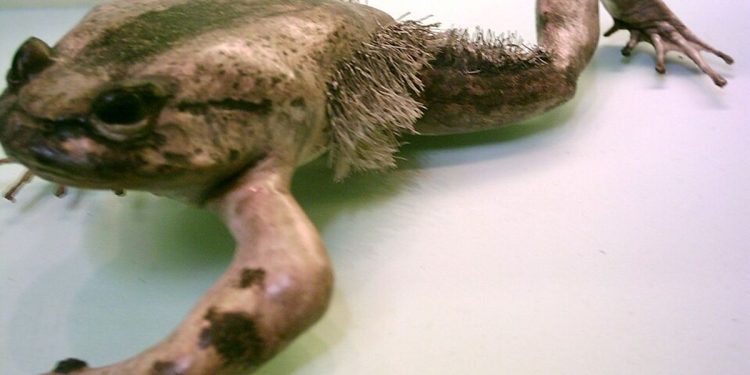The hairy frog’s vicious claws were first observed around 1900, but it wasn’t until the turn of the millennium that scientists discovered how these strange amphibians produced them – or rather, broke them. When threatened, the hairy frog (Trichobatrachus robustus) deliberately breaks the bones of its own toes, which then pierce the skin to form cat-like claws that it can rake at an attacker. No wonder he earned the nickname “horror frog”.
The rest of this article is behind a paywall. Please log in or subscribe to access the full content.
Claws are rare in amphibians and, unlike those seen in mammals, they do not have a keratinized facet. The claws of the wolverine frog are also transient, sliding in and out of the skin of the fingers. It is not known for certain whether the baring of claws is an active process, that is, the bones slide inside when the frog relaxes, but it appears that frogs can actively create claws by breaking their own bones.
Researchers working with wolverine frogs observed how they used them when being handled, twisting their bodies and using their claws to rake the handler’s skin in an attempt to make cuts. And apparently, they can be pretty brutal.
“Durrell (1954) later provided the first report on the manipulation of living objects Trichobatrachus and raised the more likely possibility that these claws serve for defense because they can inflict “deeply bleeding wounds on the person holding them,” the authors of a 2008 paper wrote. “This claim is verified by Cameroonians who hunt.” Trichobatrachus for food using long, heavy spears (…) or machetes so that they can kill the frogs without handling them and without being injured.
So they seem to serve the same function as many mammal claws, but with a much more badass origin. And that’s not the only feature of horror frogs that look like wolverines.
Horror frogs are also known as hairy frogs because of the strange fleshy filaments that males develop during the mating season. These are not hairs like those on our heads, but rather long strands of flesh containing blood vessels, which allow them to absorb more oxygen through their skin when the time comes to watch over their brood.
It’s possible that part of being an amphibian is that frogs are able to grow their claws in this rather wild way, as this group of animals is quite adept at regeneration. A similarly brutal approach to self-defense is seen in the Spanish ribbed newt, found in the Iberian Peninsula and Morocco, which pushes its ribs through its skin when threatened.
To add insult to injury, they also secrete a poison through their skin, meaning that when the salamander attacker is nicked by the broken, sharp ribs of its prey, it receives a nasty dose of toxicity designed to delay it from its meal. Spicy and poisonous? We will pass, thank you.









